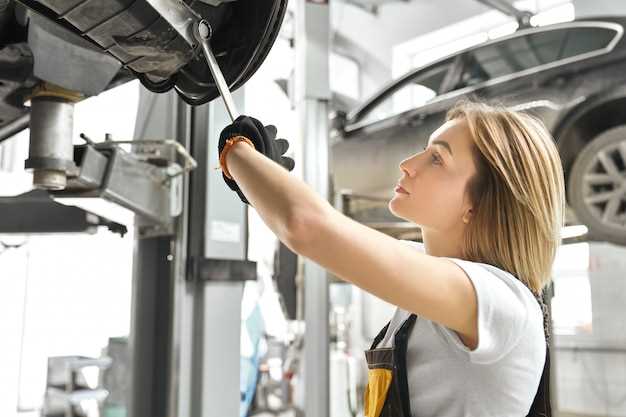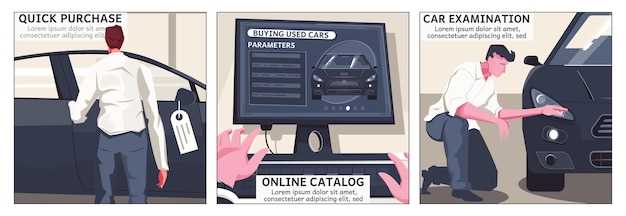
Lifting your vehicle can be a daunting task, but with the right tools and knowledge, it can be done safely and efficiently. Utilizing a reliable lift kit is essential for anyone looking to elevate their vehicle, whether for maintenance, repair, or modification purposes. A verified kit not only ensures the integrity of your lifting process but also enhances the overall performance of your vehicle.
When selecting a kit to lift your vehicle, it is crucial to prioritize safety and quality. A verified lift kit undergoes rigorous testing and validation to meet industry standards, which significantly reduces the risk of accidents and equipment failure. With the right kit, you can achieve the desired height while maintaining stability and control, thus contributing to a safer driving experience.
In this article, we will delve into the importance of using verified lift kits, how to choose the right one for your vehicle, and best practices for lifting your vehicle safely. Understanding these key aspects will empower you to make informed decisions and ensure the longevity of both your vehicle and its components.
Choosing the Right Suspension Lift Kit for Your Vehicle

Selecting the appropriate suspension lift kit for your vehicle is crucial for enhancing performance and achieving your desired ride height. Firstly, consider the type of driving you will be doing. For off-road enthusiasts, a heavy-duty kit with increased clearance may be necessary to navigate rough terrains. Conversely, if your primary concern is aesthetics or minor adjustments for larger tires, a more modest lift kit may suffice.
Next, evaluate your vehicle’s make and model. Not all kits are universal, and compatibility is essential to ensure proper installation and function. Research products specifically designed for your vehicle to avoid potential issues. Additionally, consider the quality of the components included in the kit. Look for reputable brands that provide durable materials to ensure longevity and reliability.
Another important factor is the lift height. Kits vary significantly in how much they raise the vehicle. While a higher lift can improve off-road capabilities, it may also impact handling and stability. A balanced approach often provides the best results, maintaining a manageable height while delivering enhanced performance.
Finally, installation should also be on your checklist. Some lift kits are easier to install than others, particularly for those who prefer DIY projects. If you’re not comfortable with mechanical work, professional installation may be a worthwhile investment to ensure everything is set up correctly.
Step-by-Step Installation Guide for Suspension Lift Kits
Installing a suspension lift kit can significantly enhance your vehicle’s off-road capabilities and improve its overall stance. Follow this detailed guide to ensure a safe and successful installation.
Step 1: Gather Tools and Materials
Before starting the installation, collect all necessary tools, which typically include a jack, jack stands, wrenches, a socket set, and possibly a torque wrench. Ensure you have the suspension lift kit components ready, including struts, springs, and necessary hardware.
Step 2: Prepare the Vehicle
Park your vehicle on a flat, stable surface and engage the parking brake. Loosen the lug nuts on the wheels but do not remove them entirely yet. Lift the vehicle using a jack and secure it with jack stands to ensure stability and safety during the installation process.
Step 3: Remove the Wheels
Once the vehicle is securely elevated, finish removing the lug nuts and take off the wheels. This will provide easy access to the suspension components that need to be modified or replaced.
Step 4: Disconnect Suspension Components
Carefully disconnect the components of the suspension, including sway bar links, struts, and any other necessary hardware according to the specific instructions for your lift kit. It is crucial to follow the manufacturer’s guidelines to avoid damaging parts or misaligning the suspension.
Step 5: Install New Suspension Components
Begin installing the new components from the lift kit, such as the lift struts or spacers, following the instructions provided. Ensure that all parts are correctly positioned and fit securely. It may require some adjustments or the use of replacement hardware.
Step 6: Reconnect Suspension Components
Reconnect all previously removed suspension components, such as the sway bar links and struts. Double-check that all connections are tight and secure, as loose connections can lead to safety hazards during vehicle operation.
Step 7: Reinstall Wheels
Once all suspension components are reattached, put the wheels back on the vehicle. Hand-tighten the lug nuts initially, and lower the vehicle back to the ground before completely tightening the lug nuts with a torque wrench to the specifications provided by the manufacturer.
Step 8: Align the Suspension
After installation, it is essential to have the vehicle’s alignment checked. A proper alignment ensures that the vehicle handles correctly and that tire wear is minimized. Take your vehicle to a qualified technician to perform an alignment.
Step 9: Test Drive
Finally, conduct a test drive to ensure everything is functioning as intended. Pay attention to any unusual noises or handling issues. If you notice anything abnormal, inspect the installation again to confirm that all components are secure.
By following these steps carefully, you can successfully install a suspension lift kit and enjoy the enhanced capabilities of your vehicle. Always consult the specific installation instructions that came with your kit for the best results.
Maintenance Tips for Enhanced Performance of Lift Kits

To ensure your lift kit performs optimally, regular maintenance is essential. Proper care not only enhances performance but also extends the life of your vehicle’s components. Here are key tips to keep in mind:
1. Regular Inspection: Periodically check all components of the lift kit, including shocks, springs, and hardware. Look for signs of wear, damage, or rust that could jeopardize safety and performance.
2. Lubrication: Apply appropriate lubricants to the moving parts of the lift kit. This helps reduce friction, prevents corrosion, and ensures smooth operation when adjusting your vehicle’s height.
3. Proper Alignment: After installing a lift kit, wheel alignment is crucial. Misalignment can lead to uneven tire wear and affect handling. Regularly check and adjust alignment as needed.
4. Monitor Tire Pressure: Elevated vehicles often require different tire pressure settings. Regularly check and maintain the appropriate tire pressure for optimal handling and performance.
5. Check Suspension Components: Inspect control arms, tie rods, and other suspension parts for any damage. Worn components can compromise your lift kit’s effectiveness and your vehicle’s safety.
6. Follow Manufacturer’s Recommendations: Adhere to the maintenance schedule and guidelines provided by the lift kit manufacturer. This helps ensure that all warranties remain valid and performance standards are met.
7. Be Mindful of Load Capacity: Ensure that you do not exceed the weight capacity specified for your lift kit. Overloading can strain the components and lead to premature failure.
8. Clean and Protect: Regularly wash your vehicle, especially undercarriage components, to remove debris and salt that can cause corrosion. Consider applying protective coatings to vulnerable areas.
By following these maintenance tips, you will enhance the performance of your lift kit and ensure a safer driving experience. Regular upkeep helps you enjoy the benefits of a lifted vehicle while minimizing potential issues.
